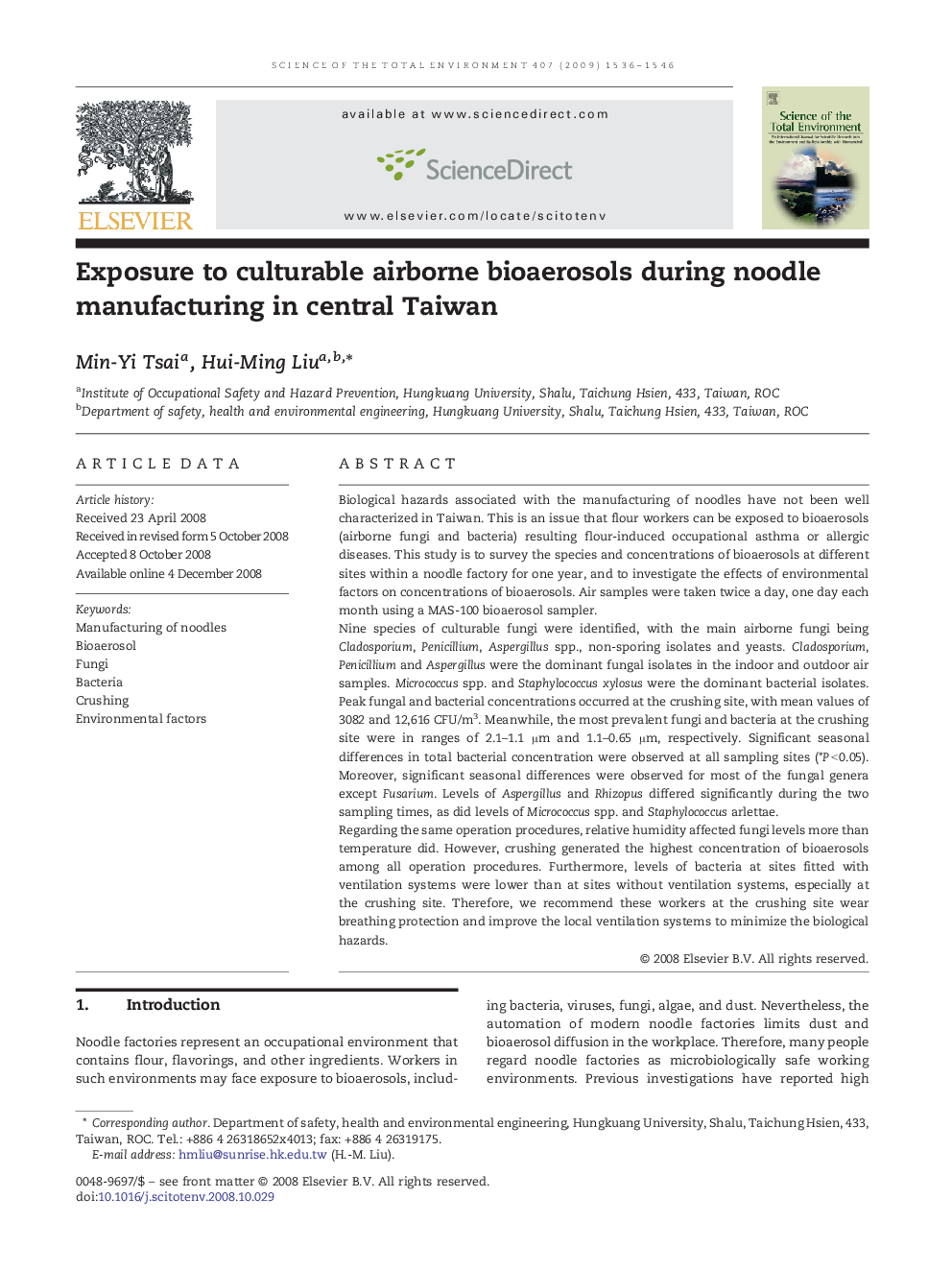| کد مقاله | کد نشریه | سال انتشار | مقاله انگلیسی | نسخه تمام متن |
|---|---|---|---|---|
| 4432122 | 1619905 | 2009 | 11 صفحه PDF | دانلود رایگان |

Biological hazards associated with the manufacturing of noodles have not been well characterized in Taiwan. This is an issue that flour workers can be exposed to bioaerosols (airborne fungi and bacteria) resulting flour-induced occupational asthma or allergic diseases. This study is to survey the species and concentrations of bioaerosols at different sites within a noodle factory for one year, and to investigate the effects of environmental factors on concentrations of bioaerosols. Air samples were taken twice a day, one day each month using a MAS-100 bioaerosol sampler.Nine species of culturable fungi were identified, with the main airborne fungi being Cladosporium, Penicillium, Aspergillus spp., non-sporing isolates and yeasts. Cladosporium, Penicillium and Aspergillus were the dominant fungal isolates in the indoor and outdoor air samples. Micrococcus spp. and Staphylococcus xylosus were the dominant bacterial isolates. Peak fungal and bacterial concentrations occurred at the crushing site, with mean values of 3082 and 12,616 CFU/m3. Meanwhile, the most prevalent fungi and bacteria at the crushing site were in ranges of 2.1–1.1 μm and 1.1–0.65 μm, respectively. Significant seasonal differences in total bacterial concentration were observed at all sampling sites (⁎P < 0.05). Moreover, significant seasonal differences were observed for most of the fungal genera except Fusarium. Levels of Aspergillus and Rhizopus differed significantly during the two sampling times, as did levels of Micrococcus spp. and Staphylococcus arlettae.Regarding the same operation procedures, relative humidity affected fungi levels more than temperature did. However, crushing generated the highest concentration of bioaerosols among all operation procedures. Furthermore, levels of bacteria at sites fitted with ventilation systems were lower than at sites without ventilation systems, especially at the crushing site. Therefore, we recommend these workers at the crushing site wear breathing protection and improve the local ventilation systems to minimize the biological hazards.
Journal: Science of The Total Environment - Volume 407, Issue 5, 15 February 2009, Pages 1536–1546